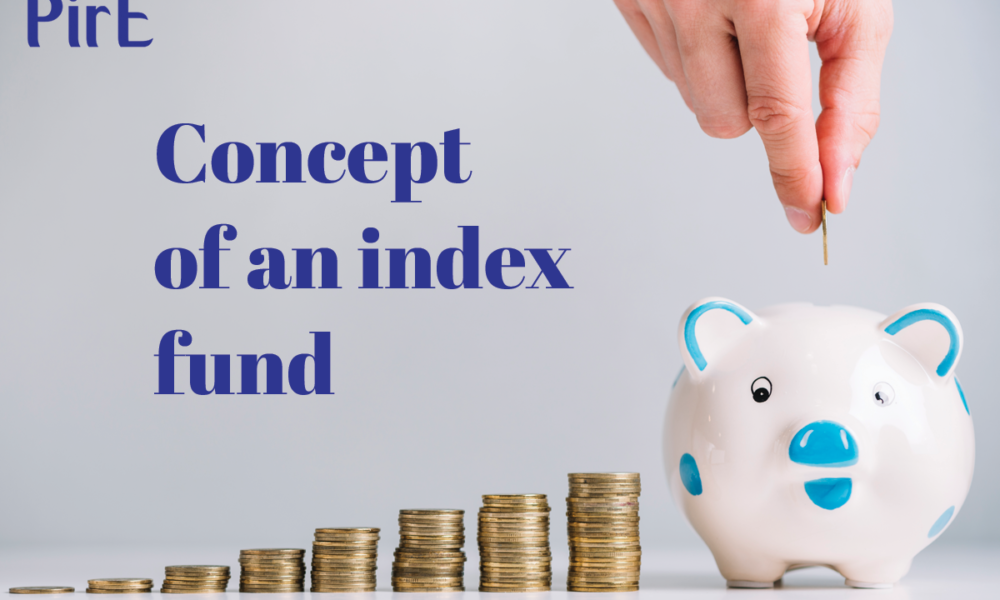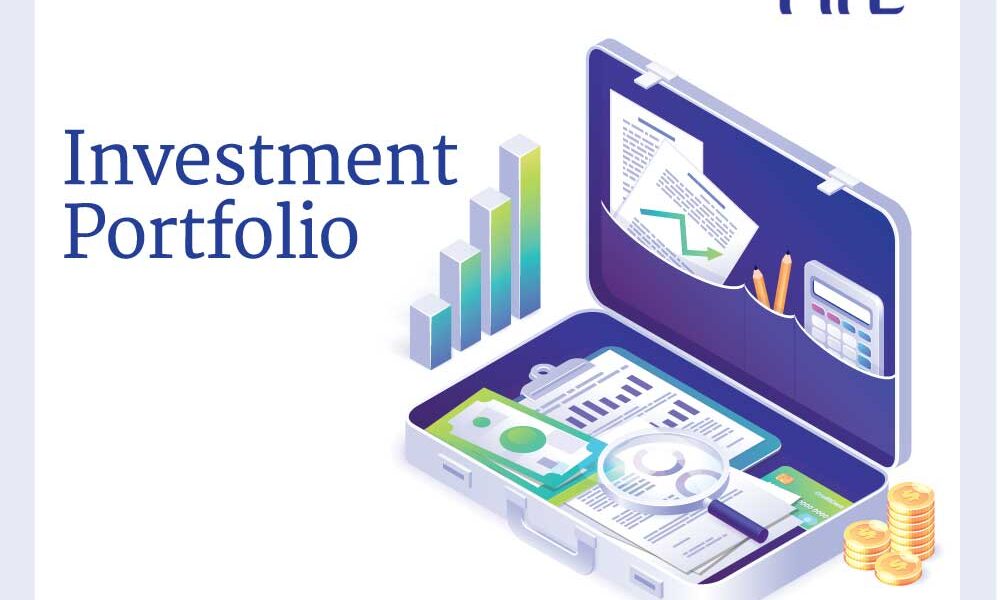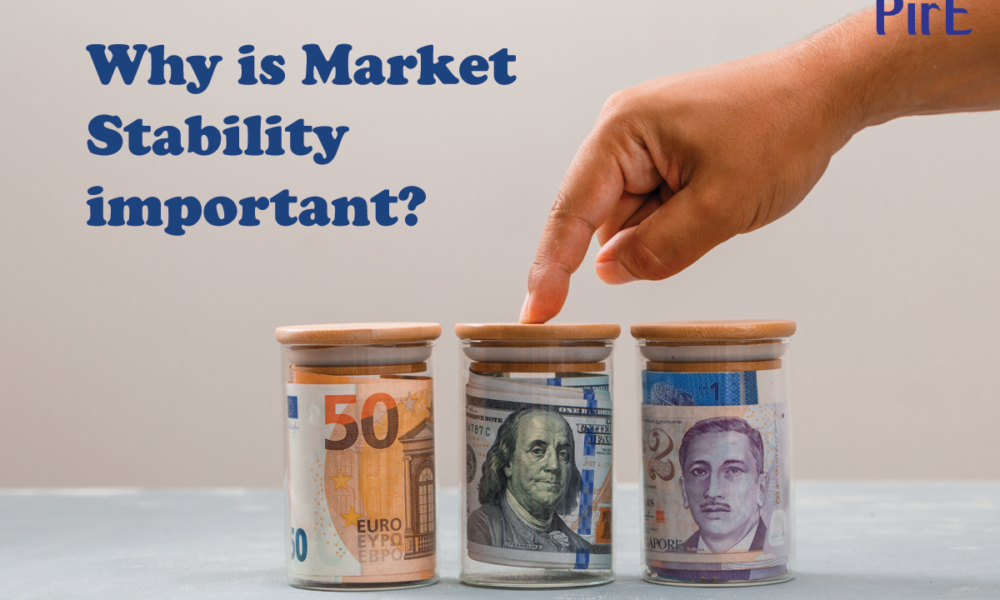Author: admin
Top 5 cryptocurrencies to invest in June
Do you know the first transaction that was made by cryptocurrency was for 10,000 bitcoins for 2 pizzas?
The journey of cryptocurrency started in the year 2008. In 2018, the Reserve bank of India stated cryptocurrency was not legal and stated banks to stop using cryptocurrency. But in the year 2020, cryptocurrency became more popular amongst Indians, and the Supreme court of India resumed all the transactions related to cryptocurrency.
Bitcoin
Bitcoin (BTC) is the first cryptocurrency, created by Satoshi Nakamoto in 2009. Bitcoin is built on a blockchain, a distributed ledger that records transactions across multiple computers. Bitcoin is maintained private and safe from fraudsters because updates to the distributed ledgers must be confirmed by solving a cryptographic problem called proof of work.
Bitcoin comes into our mind once we hear cryptocurrency but there are several other cryptocurrencies with good potential.
Ethereum
The Ether token, which is based on the Ethereum blockchain, has become a cornerstone of the cryptocurrency world. Ethereum pioneered blockchain security and utilization, and its smart contracts have since become a substrate for various applications.
Tezos
Tezos is among the most popular cryptocurrencies for social interaction among crypto investors in the very volatile cryptocurrency market. It’s a free and open-source platform that aims to remove roadblocks to blockchain adoption for digital assets and apps. Tezos is a low-energy blockchain that allows artists, entrepreneurs, brands, and others to interact with a DApps network.
Binance Coin
Binance Coin is a cryptocurrency that may be used to trade and pay fees on Binance. Binance Coin has grown beyond simply conducting deals on Binance’s exchange platform since its introduction in 2017. It may now be used for trade, payment processing, and even travel booking. It may also be traded or converted into other cryptocurrencies.
INDEX FUNDS
What is the concept of an index fund?
An index fund is a form of mutual fund that invests in equities that are comparable to those in a certain market index. This means that the scheme will outperform the benchmark index it follows.
What is the purpose of Index Funds?
A market sector is defined by an index, which is a collection of securities. Index funds are classified as passive fund management since they monitor a certain index. The securities traded in a passively managed fund are determined by the underlying benchmark. Furthermore, passively managed funds do not require professional research staff to uncover opportunities and select the best stock.
Unlike an actively managed fund, which tries to time and beat the market, an index fund is meant to track the market.
An index fund, unlike an actively managed fund that tries to pace and beat the market, is meant to mimic the performance of its index. As a result, the returns of index funds are linked to the underlying market index.
Except for a slight variance known as tracking error, the results are nearly identical to the benchmark. The fund management will frequently make every effort to minimise this inaccuracy
Few of the benefits of index funds are:
-
Low costs
Because an index fund replicates its underlying benchmark, it doesn’t require a large team of research experts to assist fund managers in selecting the best stocks. There is also no active stock trading. All of these variables contribute to an index fund’s low management cost.
-
Investing without prejudice
Index funds invest in a way that is automated and regulated. A stated mandate of the amount to be invested in index funds of various assets is given to the fund manager. This removes human judgement and prejudice from investing decisions.
-
A broad market reach
The portfolio is diversified across all sectors and stocks when money is invested in a proportion equivalent to that of an index. As a result, an investor may use a single index fund to capture the likely returns on a bigger part of the market. If you invest in the Nifty index fund, for example, you would gain exposure to 50 firms distributed over 13 industries, ranging from pharmaceuticals to financial services.
-
Tax Advantages of Index Fund Investing
Because index funds are passively managed, they often have low turnover, or only a few trades by a fund management each year. Unitholders receive less capital gains dividends as a result of fewer trades.
Risk involved in Index funds
An index fund will face the same risks as the stocks in the index it is tracking. Other risks to which the fund may be exposed include:
Lack of adaptability– When it comes to reacting to price decreases in the securities in the index, an index fund may have less flexibility than a non-index fund.
Error Tracking– It’s possible that an index fund won’t exactly match its benchmark. For example, a fund may only invest in a subset of the securities in a market index, in which case its performance is less likely to mirror that of the index.
Underperformance– Fees and expenditures, trading charges, and tracking mistakes might lead an index fund to underperform its benchmark.
5 mistakes to avoid while choosing a Financial Advisor
A financial advisor’s responsibilities typically extend beyond simply executing deals on behalf of their customers in the market. Advisors apply their knowledge and experience to create customized financial plans that help clients accomplish their financial objectives.
These tactics cover not just investing, but also savings, budgeting, insurance, and tax planning.
Advisors also meet with their customers on a regular basis to re-evaluate their present condition and future objectives, and to make appropriate plans.
You don’t have to be affluent to profit from a financial advisor’s services.
Here are five common mistakes to avoid when choosing a financial adviser:
- Keeping an eye on the past
You’re hiring more than a money manager when you hire a financial advisor. A skilled financial adviser can offer comprehensive planning and advice.
“This is the process of achieving your goals by effectively managing your resources. It lets you to consider your long-term goals and ideals, as well as how your investments and spending should be directed to achieve these objectives.”
Advisors that are primarily concerned with investment performance are missing the wider picture, which can have negative ramifications for clients.
Long-term success is not guaranteed by an investing plan alone. Similarly, an advisor’s previous performance is no guarantee of future success.
It’s risky to use prior performance as a barometer of a financial advisor’s success or competence.
2. Not inquiring about remuneration
Under the appropriateness criteria, one of the differences between fiduciaries and advisers is how they are rewarded. Advisors can be paid in one of three ways: an annual, hourly, or fixed fee; product commissions; or a mix of fees and commissions.
Fee-only advisers have no financial motive to place you in one product over another because they are not rewarded based on the assets they propose. As a result, a fee-only adviser is likely to take a significantly different approach to investing than one who is paid by investment fees.
3. Not conducting due diligence on an advisor’s qualifications
Some financial consultants are appropriate for company owners or individuals with a high net worth, while others specialise in retirement planning. Some may be ideal for young professionals looking to establish a family. Before you sign on the dotted line, be sure you know what an advisor’s strengths and shortcomings are.
4. Taking the Advice of the First Person You Meet
While it may be tempting to pick the adviser who is nearest to your house or the first advisor listed in the yellow pages, this is a more time-consuming option. Before choosing the ideal adviser for you, take the time to interview at least a few.
5. Neglect to inquire about credentials
Financial advisers must pass a test before they can provide investment advice. Inquire about your advisor’s licenses, examinations, and qualifications. The Series 7, as well as the Series 66 or Series 65, are examinations for financial advisers. Some financial counselors go one step farther and earn the designation of Certified Financial Planner, or CFP.
Unicorn Investment
A privately owned startup firm with a valuation of over $1 billion is referred to as a “unicorn” in the venture capital sector. Aileen Lee, the founder of Cowboy Ventures, a seed-stage venture capital firm located in Palo Alto, California, was the first to coin the word. Aileen Lee, a venture capitalist, created the phrase in 2013.
As of March 2022, there are over 1,000 unicorn enterprises throughout the world.
The existence of unicorns is a contentious topic. While some experts feel that unicorns are just a product of technological advancement and innovation, others argue that the growing number of unicorns is a symptom of an industry bubble.
Valuation of Unicorns
The value of unicorns is based on valuations created by venture capitalists and investors who took part in the company’s fundraising rounds. Because unicorns are all startups, their worth is essentially determined by their potential for growth and predicted development. The value of unicorns is unrelated to their actual financial performance or other essential information. Many of the firms have yet to make any profits, despite their excessively high valuations.
Unicorns are valued abnormally high for a variety of reasons.
The following factors are sometimes used to justify abnormal valuations:
- A plan for rapid expansion
For the development of a business, venture investors nowadays largely rely on fast-growth methods. Such methods promote significant sums of money to be invested in each round of funding in order to gain as much market share as feasible as quickly as possible, as well as to avoid the formation of major competitors in the marketplace. As a result, the value of a unicorn firm rises with each round of funding.
- Purchases
Many potential firms are currently unable to achieve the standards for an IPO. Instead, internet behemoths like Facebook and Google buy a slew of startups to diversify their portfolios and thwart the emergence of big competitors.
Large corporations gain from the agreements since they may purchase existing technology rather than having to construct something identical from the ground up. The fierce rivalry among the IT behemoths prompts them to offer a considerable premium, inflating the value of target firms and resulting in the creation of unicorns.
- New ideas
Technology advancements enable firms to develop more quickly. Unicorn firms are able to reach their consumers faster and reduce the time it takes to reach mass production by utilizing innovative technology.
For the year 2021, India has been ranked as the third-best country for hosting unicorn enterprises. With 33 unicorn firms, India has pushed the United Kingdom out of third place, where just 15 unicorns were created in the same year. In 2021, the United States added 254 unicorns, while China added 74 unicorns, bringing the total number of unicorns to 487 and 301, respectively.
In 2021, Indian companies were expected to collect $42 billion in investment across 1,584 deals. Over 6 lakh job possibilities have been created in India’s startup ecosystem, which has seen over 60,000 new firms launched across 56 different industries since 2016. President Ram Nath Kovind made a specific note of this in his Presidential speech on January 31, 2022, when he stressed the new potential that India’s entrepreneurs are bringing in.
Remember Your ITR
There are a few important dates for the financial year 2022-23 that you must remember. See-through all the dates to avoid penalties and fines.
| Category of Taxpayer | Due Date for Tax Filing-
FY 2021-22 * (unless extended) |
| Individual / HUF/ AOP/ BOI
(books of accounts not required to be audited) |
31st July 2022 |
| Businesses (Requiring Audit) | 31st October 2022 |
| Businesses (Requiring TP Report) | 30th November 2022 |
| Due Date | Tax Due |
| 15th June 2022 | The first instalment of advance tax for the fiscal year 2022-23 is due on this day. |
| 15th July 2022 | Individuals and companies that are not subject to a tax audit and have not engaged in any foreign or defined domestic transaction must file income tax returns for the fiscal year 2021-22. |
| 15th September 2022 | The second installment of advance tax for the Fiscal Year 2022-23 |
| 30th September 2022 | Submission of the audit report (Section 44AB) for AY 2022-23 for taxpayers liable for audit under the Income Tax Act. |
| 31st October 2022 | ITR filing for taxpayers requiring audit (not having international or specified domestic transactions). |
| 31st October 2022 | Submission of the audit report for AY 2022-23 for taxpayers with transfer pricing and defined domestic transactions |
| 30th November 2022 | ITR filing for audited taxpayers (not having international or specified domestic transactions). |
| 15th December 2022 | The third installment of advance tax for the Fiscal Year 2022-23 |
| 31st December 2022 | Last day to file a belated or amended return for fiscal year 2021-22. |
| 15th March 2023 | i. The fourth installment of advance tax is due for the FY 2022-23
ii. The due date for the whole amount of advance tax for FY 2020-21 for taxpayers covered under the presumptive scheme of Section 44AD and 44ADA |
What if you missed filing your ITR?
If the initial due date for submitting an income tax return is missed, a belated return can be filed later beyond the due date. The income tax department also sets the date by which the late return must be filed. This deadline has been pushed back three months to December 31st of the assessment year (unless extended by the government).
However, if the return is not filed on time, a penalty of Rs 5,000 would be imposed. Moreover, if the person’s total income is less than Rs 5 lakh, the cost is only Rs 1,000.
The investment portfolio
The investment portfolio is a combination of different investments such as stocks, mutual funds, real estate investment, and so on. It is a long-term investment strategy.
Importance of the right Investment portfolio-
- Low market volatility
A well-diversified investment portfolio serves to reduce the portfolio’s total risk. The total impact of market volatility tends to reduce if investments are made across several asset classes and categories.
- Various investing alternatives
Investors enjoy the distinctive benefits of each instrument while reducing risk by picking various investment alternatives such as mutual funds, ETFs, term deposits, and so on.
- Assists with risk management
Investment alternatives that adapt to unique economic situations are at the heart of a varied portfolio. While an investor with a diverse portfolio would not obtain unusually high returns compared to one who buys a single, high-flying stock, they will also avoid the market’s ups and downs. In other words, an investor will get weighted average returns on their underlying assets, but will not be entirely exposed to the volatility of those securities.
The investment portfolio building consists of 3 steps:
- Risk analysis
- Asset allocation
- Review and maintain balance
Now let us learn about these steps in brief-
- Risk analysis
The ability to take risks is more objective. It is dependent on your age and future earnings possibilities. A youthful earner is likely to be a high-risk taker. It is, to some part, a result of how much money you have (compared to your income needs).
If you’re an older investor with a low-risk tolerance but a high-risk appetite, you shouldn’t invest in a portfolio containing a lot of risks.
If you’re young and have a high-risk tolerance but a low-risk appetite, you shouldn’t work with a particularly aggressive portfolio. A cautious portfolio, on the other hand, may not be the best option for such young investors.
- Asset allocation
It refers to the percentage of each form of investment in your portfolio that you hold, and it’s crucial for attaining optimal diversification. Factors influencing asset allocation include:
i) Your return expectations
ii) Your level of risk
iii) The length of time you plan to invest.
If you have a high-risk profile, want to earn large returns, and have a long-term investment horizon of more than 15 years, your portfolio asset allocation can look like
This:
i) 80% of the money is invested in stocks
ii) Bonds get 15% of the money
iii) 5% is allocated to cash and cash equivalents
This is, nevertheless, a highly simplified understanding of asset allocation. Ideally, you would analyze the full investing spectrum and diversify your portfolio among two or three investment possibilities, such as a stock fund, a bond fund, and maybe a real estate investment trust.
- Review and Manage
Your portfolio will deviate from its target allocation due to market fluctuations.
While you won’t be able to rebalance for every tiny variation from goal allocation, do so on a regular basis (say, once a year) or when the target allocation exceeds a specific level.
In addition, keep an eye on your satellite portfolio’s selections (both equity and debt) on a frequent basis.
Why is Market Stability important?
Financial stability is defined as a state in which the financial system is not unstable. Financial stability comes when the financial system is well-structured to enable smooth market discipline functioning, both the financial safety net and the payment and settlement system are operational.
It can also be referred to as a state in which the financial system’s three components — financial institutions, financial markets, and financial infrastructure are all stable.
The phrase ‘financial institution stability describes a situation in which individual financial institutions are sound enough to carry out their financial intermediation functions sufficiently without the help of external institutions such as the government.
‘Financial market stability refers to a state in which market transactions are not disrupted significantly, and financial asset values are not significantly deviated from economic fundamentals, allowing economic actors to raise and manage money with confidence.
Financial stability is “a state in which the financial system can smoothly assist actual economic operations and is capable of unravelling financial imbalances emerging from shocks,” according to a more wide definition.
Importance of Financial Stability
Financial stability is necessary not just for price stability, which is the central bank’s policy aim, but also for the economy’s healthy development. This is because financial instability imposes significant costs on an economy, as price volatility in financial markets rises, and financial institutions or firms may fail. Furthermore, economic progress may be hindered at this period because economic factors find it difficult to make reasonable judgments, and resource allocation efficiency suffers.
- According to the Financial Stability Board (FSB), an international watchdog, the rapidly expanding crypto marketplaces might pose a serious danger to global financial stability if policymakers do nothing.
- The benchmark Sensex fell 2,702 points, or 4.72 per cent, on the Indian stock market. This is Sensex’s fourth-worst drop ever in absolute terms. The index dropped 2,850 points throughout the trading day.
- The National Stock Exchange’s wider Nifty 50 index fell 815.30 points, or 4.78 per cent, to 16,247.95 points.
- Bullion was used by investors as a safe haven. At the Multi Commodity Exchange (MCX) in Mumbai, gold prices increased by about 3% to Rs 51,750 per 10 gramme, while silver prices increased by over 3% to Rs 66,556 per kilogramme. The price of gold and silver has reached its highest level in almost a year. So far this month, gold and silver prices have risen by more than 8%.
- The current gold price increased by 1.9 per cent to $1,943.86 per ounce on the international market, the highest level since January 2021. Gold futures in the United States increased by over 2% to $1,949.20 per ounce.
Following Russia’s military operation in Ukraine, stock markets throughout the world are bleeding. This resulted in a tremendous loss of money for the investors. The BSE-listed businesses’ market capitalization fell to Rs 242.24 lakh crore. It lost over Rs 13 lakh crore in a single day.
Scope of NFT in India 2022
A non-fungible token (NFT) is a non-transferable unit of data that may be sold and exchanged and is held on a blockchain, a type of digital ledger. Digital media such as photographs, movies, and music may be connected with several types of NFT data units. NFTs vary from blockchain cryptocurrencies like Bitcoin in that each token is uniquely recognized.
Although NFT ledgers purport to give a public certificate of authenticity or proof of ownership, the legal rights that an NFT conveys might be ambiguous. NFTs do not block the production of NFTs with identical related files, nor do they restrict the sharing or copying of the underlying digital data. They also do not impart the copyright of the digital files.
Lets now see the Pros and Cons of NFT
Pros
- They can be used to fractionalize physical asset ownership.
Fractionalizing ownership of some assets, such as real estate, artwork, and expensive jewellery, is challenging today. A computerised replica of a structure is considerably easier to split among several owners than an actual one. The same may be said for a valuable piece of jewellery or a limited-edition bottle of wine.
The market for some assets can be considerably extended by digitalization, resulting in more liquidity and higher pricing. It can improve the way financial portfolios are built on an individual basis, allowing for more diversification and more precise position size.
- NFTs’ Blockchain Technology Is Extremely Safe
NFTs are made with blockchain technology, which is a method of storing data that is hard to hack, change, or destroy. A blockchain is essentially a digital record of transactions that is copied and distributed throughout a peer-to-peer network of users.
All NFTs kept on the blockchain contain unique records of authenticity and chain-of-ownership, preventing them from being mishandled or stolen in theory. Data can’t be edited or removed after it’s been added to the chain. This ensures that each NFT’s scarcity and authenticity are preserved, fostering a level of trust uncommon in many markets.
Cons
- NFTs can harm the environment
It takes a lot of computational power to build blockchain records, and there’s a lot of talk about how bad the process is for the environment in the long run. According to some projections, the carbon emissions related with mining cryptocurrencies and NFTs would exceed those associated with the entire city if current trends continue. NFTs revolutionise global marketplaces, eliminating the need for travel and office space consumption, blockchain supporters say that an offsetting drop in pollution is happening.
- NFTs are volatile and illiquid.
The market for NFTs is not particularly liquid due to their immaturity. NFTs aren’t well-understood, and there aren’t many potential buyers or sellers. As a result, NFTs can be extremely difficult to trade, particularly during times of stress. As a result, NFT pricing can be quite variable.
- NFTs don’t bring in any money.
NFTs, unlike dividend-paying equities, interest-bearing bonds, and rent-generating real estate, do not provide income to their owners. The rewards on NFT investments, like those on antiques and other collectables, are totally dependent on price appreciation, which is not something you should bank on.
NFT’s Future
NFTs are a fascinating invention that is gaining a lot of attention as its applications grow. The attention-getting price tags on certain NFTs are adding fuel to the flames. However, because NFTs are very illiquid and volatile, smart investors should proceed with caution when considering purchasing these assets.
It’s not a good idea to buy them in the hopes of getting triple- or quadruple-digit price returns. The true value of NFTs rests in their ability to change the way markets work and improve how we handle and regulate critical data. The sky is the limit here.
Union Budget: Step towards India’s growth
Finance Minister Nirmala Sithraman presented the Union Budget 2022-2023 on 1st February. The Union budget is said to be worth 39.45 crores, 4.6% more than the current year with a steer focus on the infrastructure sector. Also, 1lakh crore is provided to the states to boost the investments in the economy.
The 2022-2023 Union Budget aims to grow the economy for 25 years. “This Budget seeks to lay the foundation and give a blueprint to steer the economy over the Amrit Kaal of the next 25 years – from India at 75 to India at 100. It continues to build on the vision drawn in the Budget of 2021,” said Finance Minister Nirmala Sithraman
The budget has 4 main growth areas PM Gati Shakti, Inclusive Development, Climate Action, and Energy Transition.
Tata Steel CEO and Managing Director T V Narendran appreciated the Union Budget, describing it as yet another progressive, future-focussed and inclusive budget that aimed to position the economy on an accelerated growth trajectory, especially in the backdrop of an encouraging broader economic recovery.
Key points of 2022-2023 Union Budget
-
Virtual assets taxed @ 30%
A tax of 30% is levied on virtual assets such as NFT, cryptocurrency due to an increase in money laundering, tax evasion, and terror financing with cryptocurrencies like Bitcoin, Ether. Further 1% TDS will be charged on any payment made using digital assets. Although losses on such investments will be allowed to set off.
-
Digital Rupee
The Reserve Bank of India will be soon launching Digital Rupee- Central Bank Digital Currency (CBDC) in the upcoming financial year which will be backed by Blockchain technology. A formal announcement will be soon issued by the Reserve Bank of India.
-
MSME in the hospitality sector
Emergency Credit Line Guarantee Scheme (ECLGS) will be extended by March 2023. Under this scheme stressed MSMEs will be provided collateral-free loans. The scheme has been expanded by Rs 50,000 crore amounting to a total of Rs 5 lakh crore.
-
Healthcare
A hike of 16% is been allocated to the healthcare sector from Rs 73,931 crores to Rs 83,200 crores. The ‘National Tele Mental Health Program,’ unveiled by FM Nirmala Sitharaman, would contain a network of 23 tele-mental health centres of excellence.
-
Science and Technology
The Union Budget for 2022-23 allocates Rs 14,217 crore to the Ministry of Science and Technology, a fall of 3.9 percent from the previous fiscal year. Department of Science and Technology (DST), Department of Biotechnology, and Department of Scientific and Industrial Research are the three departments that make up the ministry (DSIR). The Department of Science and Technology will receive Rs 6,000 crore, the Department of Biotechnology will receive Rs 2,581 crore, and the Department of Scientific and Industrial Research will receive Rs 5,636 crore.
-
Financial assistance for capital Investment
To aid states in catalyzing overall investments in the economy, the expenditure for the ‘Scheme for Financial Assistance to States for Capital Investment’ is being boosted to Rs 1 lakh crore in FY23, up from Rs 15,000 crore in the revised estimate for the current year.
The allotment will be utilized for PM Gati Shakti-related and other productive capital investments, and these 50-year interest-free loans are in addition to the standard borrowings available to states.
-
Digital Education
One Class- One Tv Channel” program by PM Narender Modi is to be increased from 12 channels to 200 channels. Due to the coronavirus pandemic students have lacked the formal mode of education. This program will be available from class 1 to class 12in different Indian languages.
Type of Investments
Investing is an important aspect of building wealth. Investment helps us in meeting our financial goals and gives a pathway to a safe and secure future.
There are several investments in the market, but choosing the ideal investment is very important. The following is a list of investments that can help you save money.
Stocks
When you buy a stock, you become a shareholder in a corporation. Ownership shares, often known as equity shares, are represented by stocks. The success or failure of a firm, the sort of stock you own, what’s going on in the share market as a whole, and other factors all have a role in whether you earn money or lose money on a stock.
Stocks and stock mutual funds may be a valuable part of a well-balanced investing strategy.
Cryptocurrency
A cryptocurrency is a digital, encrypted, and decentralized medium of trade. There is no central body that administers and maintains the value of a cryptocurrency, unlike the US dollar or the Euro. Instead, these responsibilities are divided throughout the internet among the users of a cryptocurrency.
Although most individuals invest in cryptocurrency as they would in other assets such as stocks or precious metals, you may use crypto to buy conventional products and services. While cryptocurrency is a fresh and interesting asset class, investing in it may be dangerous since you must conduct extensive studies to properly comprehend how each system operates.
Fixed Deposit
A fixed deposit, commonly known as an FD, is an investment product offered by banks and non-banking financial institutions to assist consumers to save money. An FD account allows you to invest a large sum of money for a certain length of time at a specified rate of interest. You receive the lump payment, plus interest, at the end of the term, which is a fantastic money-saving strategy. Fixed deposit accounts come with a variety of interest rates. You have the option of choosing a fixed deposit for a term ranging from 7 to 10 years. This is why a term deposit is sometimes known as an FD. When you open a fixed deposit account with a particular interest rate, it is referred to as a “fixed deposit.”
Mutual Funds
A mutual fund is a form of financial vehicle that invests in securities such as stocks, bonds, money market instruments, and other assets by pooling money from multiple participants. Professional money managers manage mutual funds, allocating assets and attempting to generate capital gains or income for the fund’s investors. The portfolio of a mutual fund is built and managed to meet the investment objectives indicated in the prospectus.
Mutual funds provide access to professionally managed portfolios of shares, bonds, and other assets to small and individual investors.
- ‹ Previous
- 1
- 2
- 3
- 4
- Next ›










